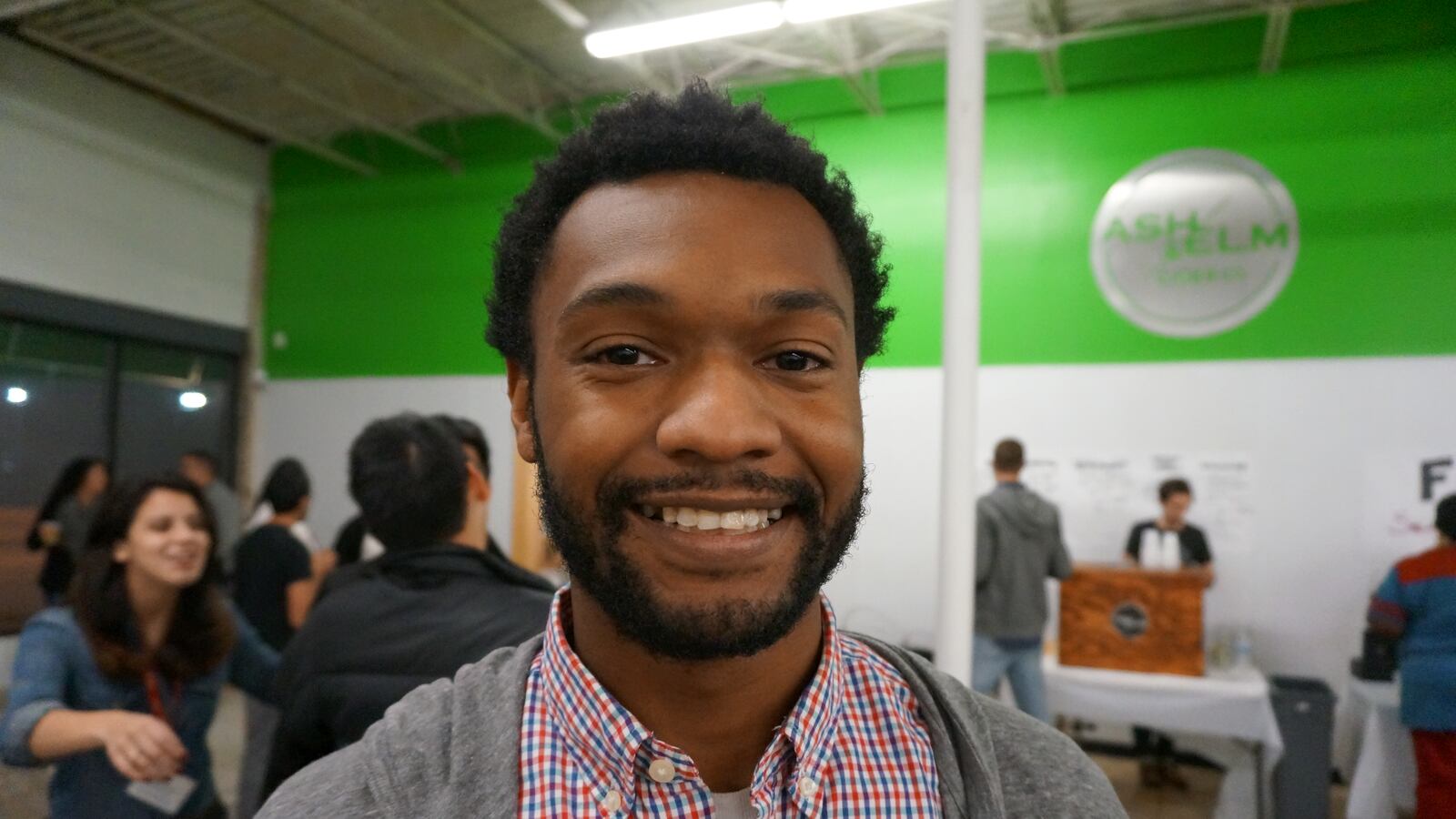Dozens of educators gathered recently to tell stories of the challenges and joys of teaching. The event was organized by teacher Ronak Shah and sponsored by Teach for America. In the coming weeks, Chalkbeat will share a few of our favorites, condensed and lightly edited for clarity.
Andrew Pillow teaches technology and social issues at KIPP Indy College Prep Middle. He grew up in Louisville and graduated from the J. Graham Brown School. For more stories about Indianapolis educators, see our “What’s Your Education Story?” occasional series.
This story starts way, way back in Louisville Kentucky. I went to the Brown School, and the Brown School is the very best school in the state of Kentucky. That’s not hyperbole. That’s objective fact.
Within the Brown School, even though it was a very good school, they actually have different tracks of students. They had me take this test. After I took that test, lo and behold, I was in one of the higher tracks.
When people would go to class, the regular kids would go to (one) class, and I got to go to another class where we got to do higher-level stuff. We’re walking around. We’re measuring stuff. We’re doing projects around the school. I’m feeling very, very good about myself.
There was this girl at the Brown School, her name was Crystal. Crystal was the apple of my eye. She was my crush for essentially 12 years. She had this caramel skin, long, natural hair. She was the real deal.
(One day) we’re walking around. I’m with my eyeglass, doing all the math and stuff like that. I’ve got this really big ruler, which was probably a yardstick looking back at it. I’m in sixth grade, seventh grade.
Crystal’s in the hallway with her class, and then she turns to her friend Ashley as we’re walking up — she turns around in her loud cackling voice and says, “Here come the retarded kids.”
I just stopped. I’m like, Oh my god. Is that what this is? I’ve heard about such things at other schools, but surely that’s not this.
I went home and asked mom. She’s like, “Yeah, you have an (individualized education plan), but that doesn’t mean anything.” She said a bunch of stuff that probably sounded really good to her, but when you’re in middle school and you find out that you’re not in the class that people think highly of, there’s really nothing anybody can say.
From that point on, I disrupted class at every possible point. I became the class clown, or as what I overheard the teacher in the lounge say one time, the “class terrorist.”
I didn’t feel confident about answering questions, so when people would answer questions and they would get them wrong, I would sing, “He’s a smart guy.” It spread to every grade in the school, and it had the intended effect because everybody was afraid to raise their hand, just like me.
Let’s fast forward to my second year teaching at KIPP. I’m going through and we are in my history class and there’s like 30 questions so every student has to answer a question. And I have a kid and he is (dancing) every two seconds. As we get further down, his dancing gets worse and more provocative. (Then he gets the whole class dancing.)
I told my mom about this, and she said, “It sounds like (the student) is a lot like you. The way he got worse, as he got closer to having to answer the question tells me he was doing the exact same thing that you were doing.”
What I realized is that he didn’t want to have his “Here come the retarded kids moment.” This changed the way that I’ve looked at every student in the classroom. That was the day that I learned to embrace the people and the students that I saw myself in.

